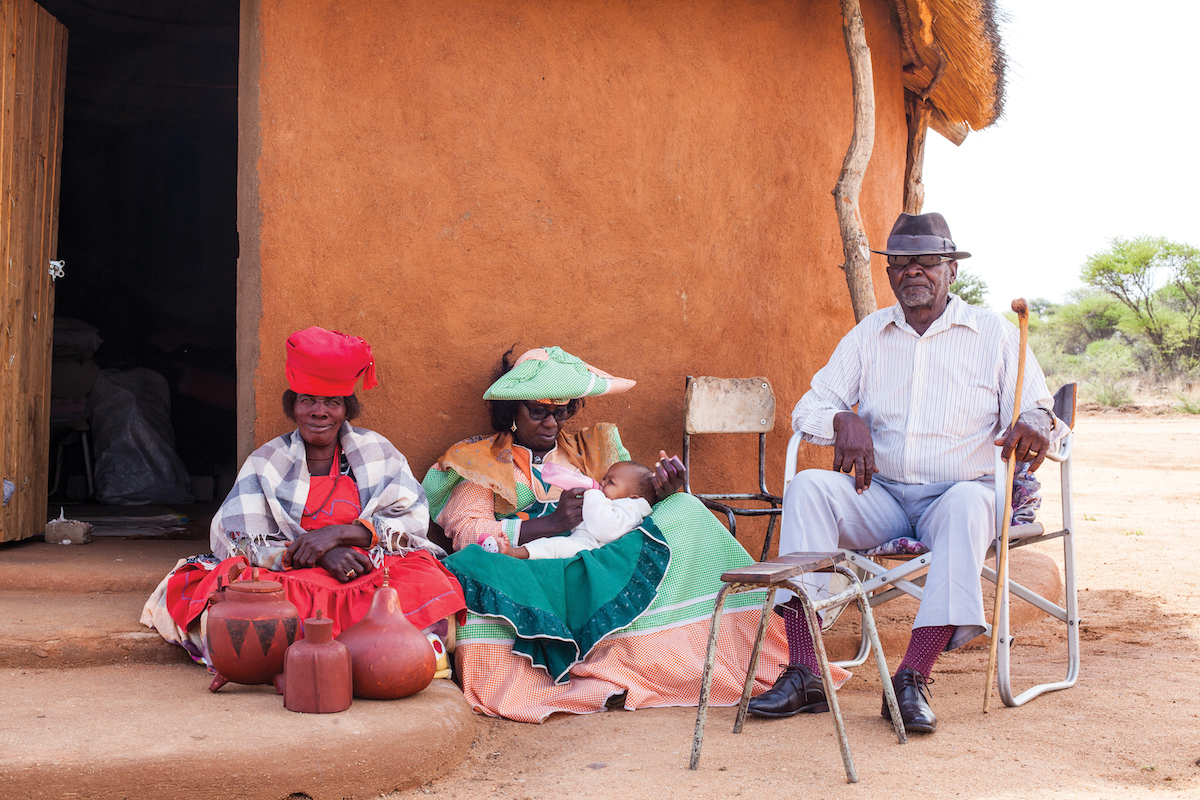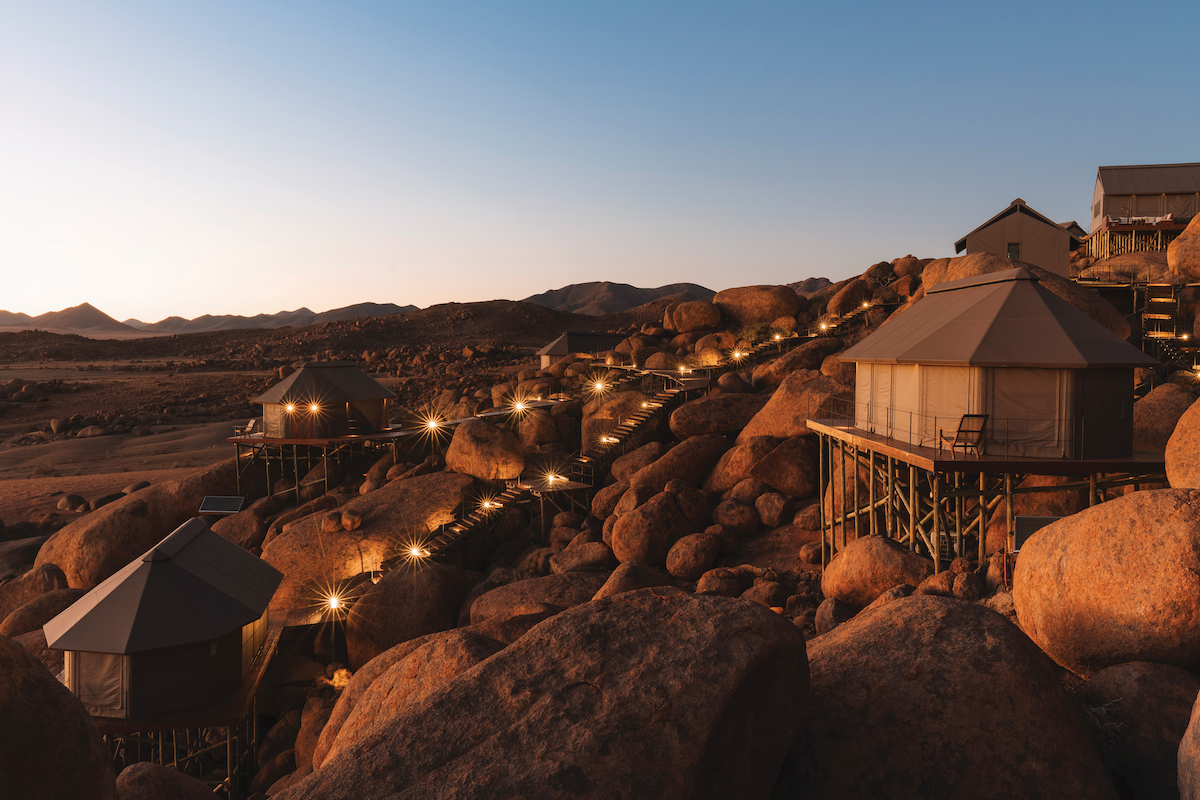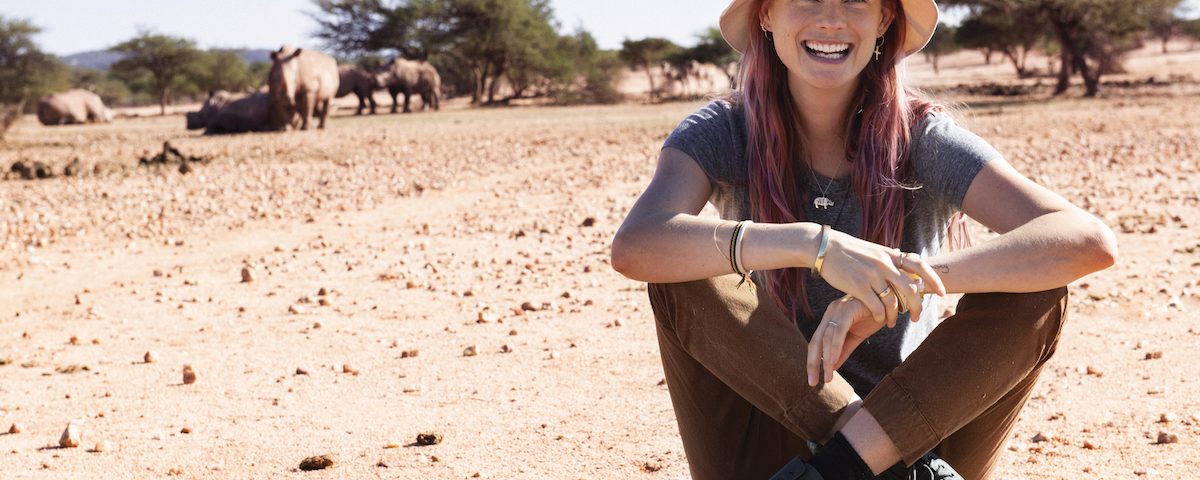
Living history at Ombu Cultural Village
August 28, 2019
A Victorian Safari: Zannier Hotels Sonop Lodge
August 29, 2019The opportunity to come home to see what is happening, to meet people caring for orphaned black and white rhinos, and to work with the trackers, rangers and communities to raise awareness is very important to me. Someday, I want to take my children to experience these animals in the wild.
– Behati Prinsloo
Text Nina van Zyl
Photograph Hugh Lippe
Namibian-born supermodel Behati Prinsloo recently joined forces with Save The Rhino Trust Namibia (SRT) in an effort to raise awareness for rhino conservation on the global stage.
As part of her partnership with the organisation, she visited Namibia and immersed herself in the work undertaken in the public and private sector to protect Namibia’s critically endangered black rhino.
Behati joined trackers from SRT and rangers from the Conservancy Rhino Ranger Incentive Programme in north-western Namibia to track rhinos across the rugged terrain, while learning about wildlife crime and gaining a deeper insight into the commitment needed to protect Namibia’s rhinos.
With generous aerial support from Westair Aviation and B2Gold, along with these tourism partners, Behati’s trip included visiting the orphaned rhinos raised at Mount Etjo Safari Lodge; Desert Rhino Camp, a joint venture partnership between Wilderness Safaris Namibia, SRT and conservancies, designed to support SRT trackers in an area where black rhinos roam free; a stop at DeRiet in the Torra Conservancy where the community has made a choice to live with wildlife; and Ongava Game Reserve, a great example of Namibia’s progressive rhino custodianship program.
SAVE THE RHINO TRUST NAMIBIA AND WILDERNESS SAFARIS
SRT was founded by the late Blythe Loutit, her husband Rudi, and the late Ina Britz in collaboration with local government and traditional leaders. The aim was and continues to be to monitor and protect the last free-roaming population of black rhinos in the world. After a shocking decline of 98% of black rhinos between 1960 and 1995, the population has stabilised, but is still under threat. Today, there are approximately 2,400 black rhinos left globally. In Namibia, SRT’s trackers and Rhino Rangers patrol the vast northwest, covering an area 25 000 km2. They come from the local community and possess an intimate knowledge of the area’s rhinos and their habitat. Their conservation involvement in protecting the world’s largest free-roaming population of black rhino has meant the survival of the species here.
Wilderness Safaris, an eco-friendly tourism company, protects around 2,4 million hectares of land throughout southern Africa. In 2003, in a joint partnership with SRT, they established the Desert Rhino Camp in the Palmwag concession area. Encompassing 1 360 km2, the area is patrolled exclusively by SRT with support from Ministry of Environment and Tourism and the Namibian Police. Visitors to Desert Rhino Camp have the unique opportunity to experience what it is like to track rhinos while making a tangible difference to the species’ conservation.
This article was first published in the Spring 2019 issue of Travel News Namibia.


